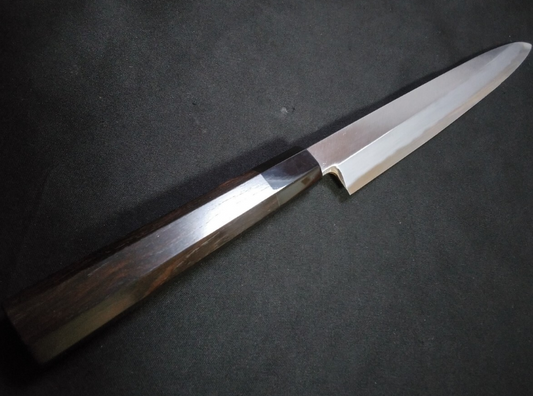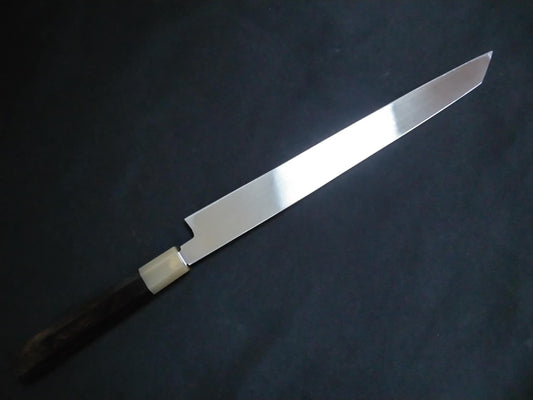
White Steel #1
-
The Pinnacle of Japanese Knife Steel
In the hands of a skilled chef, White Steel #1 becomes more than just metal — it becomes precision, artistry, and expression.
With its ultra-high carbon content and near-zero impurities, this steel achieves unmatched sharpness and control, demanding both respect and mastery.
Discover why top chefs around the world choose White Steel #1, and how its purity transforms every cut into a statement of craftsmanship. -
White Steel #1 Japanese Knife Collection
-
White Steel #1 Yanagiba 270mm-Kido Finishing
Regular price $380.00 CADRegular priceUnit price / per -
White Steel #1 (Honyaki) Yanagiba (Kiritsuke) 300mm-Mirror Polished(one side)
Regular price $900.00 CADRegular priceUnit price / per$0.00 CADSale price $900.00 CADSold out
KIREAJI's Three Promises to You
-

1. Forged in the Legacy of Sakai
From Sakai City—Japan’s renowned birthplace of professional kitchen knives—each blade is crafted by master artisans with over six centuries of tradition. Perfectly balanced, enduringly sharp, and exquisitely finished, every cut carries the soul of true craftsmanship.
-

2. Thoughtful Care for Everyday Use
Every knife includes a hand-fitted magnolia saya for safe storage. Upon request, we offer a complimentary Honbazuke final hand sharpening—giving you a precise, ready-to-use edge from day one.
-

3. A Partnership for a Lifetime
A KIREAJI knife is more than a tool—it is a lifelong companion. With our bespoke paid aftercare services, we preserve its edge and beauty, ensuring it remains as precise and dependable as the day it first met your hand.

Why Many Product Photos Show Only the Blade
At KIREAJI, every knife is made to order in Sakai, Japan. Photos show the blade before the handle is attached, allowing artisans to perfect the balance and edge for your specific order. Your knife arrives fully finished — tailored just for you.

Global Delivery from Sakai
Across the world, discerning cooks seek authentic Japanese knives from Sakai — Japan’s legendary knife-making city with over 600 years of tradition.
At KIREAJI, we work alongside master artisans in Sakai to fulfill that desire, shipping genuine handcrafted knives directly from the workshop to kitchens worldwide.
White Steel #1: The Pure Steel for Ultimate Sharpness and Precision
-
In the world of Japanese knives, there exists a material that reveals its full potential only in the hands of those with the skill to master it. That material is White Steel #1 (Shirogami No.1).
Renowned for its exceptionally high carbon content—even greater than that of White Steel #2—this steel offers unmatched hardness and razor-sharp edges, pushing the boundaries of what a blade can do. Crafted with extreme purity and virtually no added alloy elements, it is a steel made for chefs who value absolute control and precision.
-

The Meaning of “Pure”
White Steel #1 is defined by its extreme purity, with impurities such as phosphorus and sulfur reduced to a minimum.
Unlike many modern steels, it contains no alloying elements like chromium, molybdenum, or tungsten.
As a result, it delivers a sharpening experience that feels clean, direct, and intuitive—a steel that does not interfere with the instincts of the sharpener.This means the steel doesn’t “resist” the chef, allowing the edge to respond precisely to the smallest adjustments. In short, White Steel #1 is a material that lets you communicate with your blade.
-
High Carbon for Unrivaled Sharpness
Thanks to its high carbon content, White Steel #1 allows for ultra-thin, razor-like edges—a hallmark of traditional Japanese knives.
Here’s what that means in the kitchen:
- Sashimi slices glide through fish fibers without crushing them
- Katsuramuki and other precision techniques are made easier with a blade that responds instantly to fine control
- Ingredients retain their shape, texture, and visual appeal
This is not just about sharpness—it’s about elevating the quality of your cuisine.
-
A Material That Demands Skill
But White Steel #1 is not a material for everyone. In fact, it’s known to be one of the most difficult steels to work with.
- Its high carbon and low toughness mean it is more prone to chipping
- Heat treatment requires precise temperature control—only master blacksmiths can do it right
- Its hardness means you must choose the right cutting board and use proper technique
White Steel #1 has incredible potential, but it takes both a skilled maker and a knowledgeable user to unlock it.
-

Why Do Chefs Still Choose It?
Precisely because of these challenges, White Steel #1 continues to be a favorite among top chefs worldwide.
- For chefs who want to feel every nuance of the blade
- For knife enthusiasts who enjoy sharpening as a craft
- For professionals in Japanese cuisine, French fine dining, or sushi, where edge control is everything
White Steel #1 is not just a material. It is a philosophical tool—one that transforms cutting into a form of artistic expression.
-
In Summary
So, what is White Steel #1?
It is a steel that embodies purity, sharpness, and hardness at the highest level.
- Extremely high carbon content
- Near-zero impurities
- No alloying elements — easy to sharpen and refine
- Requires expert heat treatment
- Used in top-tier Japanese knives for professionals
If you are a chef or enthusiast who wants to fully control your blade and appreciate the craft behind the edge,
White Steel #1 will be your most trusted partner in the kitchen.
What Is White Steel #1?
-
— The Pinnacle of High-Purity Carbon Steel Sharpness
White Steel #1 (Shirogami No.1) is an extremely high-purity carbon steel used in Japanese knives. Its most notable characteristic is that it contains a higher amount of carbon than White Steel #2. This increased carbon content gives White Steel #1 greater hardness and the distinct razor-sharp edge that Japanese knives are known for.
-

Composition Features
- With its high carbon content, it is exceptionally hard, allowing the edge to stay sharp for a long time.
- Impurities such as phosphorus and sulfur are minimized to the utmost, resulting in a steel of very high purity.
- It contains almost no alloying elements like chromium or tungsten. This simple composition ensures ease of sharpening and a beautifully finished blade.
-
Handling Difficulty and Artisan Skill
Due to the high carbon content, although the steel is very hard, it also has less toughness, making it more prone to chipping.
Therefore, White Steel #1 requires expert craftsmanship in heat treatment and finishing. Only when properly forged and tempered by skilled artisans can its full performance be realized. -
Summary
White Steel #1 is characterized by:
- High carbon content
- Extremely low impurities
- No alloying elements, making it a pure steel material
This composition allows it to boast top-class sharpness and hardness among Japanese knives. However, its handling demands skill and experience, relying heavily on the delicate craftsmanship of artisans.
White Steel #1 is truly a “work of art” in blade materials, made for chefs who pursue the ultimate sharpness.
Features of White Steel #1
-

Exceptional Sharpness and Hardness
With an increased carbon content, White Steel #1 achieves exceptional sharpness and boasts a high hardness rating of HRC66, making it an ideal material for Japanese knives, particularly those used in traditional cuisine.
-

Ease of Sharpening
Due to its low levels of additives and impurities, White Steel #1 is surprisingly easy to sharpen with a whetstone, a rare quality for such a high-hardness knife steel.
-

Pure Steel Composition
Free from tungsten (W) and chromium (Cr), which are commonly found in blue steel, White Steel #1 is praised for its purity and ease of maintenance, offering a balance between sharpness and usability despite being less wear-resistant than blue steel.
Recommended Users for White Steel #1
-

1. Precision-Driven Chefs
Excels in fine, detail-oriented work such as sashimi slicing or katsuramuki, where maximum sharpness is essential.
-
2. Experienced Sharpeners
Rewards refined technique — every pass on the stone shows in the final edge quality.
-
3. Sharpness-First Professionals
With higher carbon content than White #2, it offers a finer, longer-lasting edge for those who can maintain it properly.
White Steel #1: The Pinnacle of Sharpness and Craftsmanship
-

White Steel #1 represents the highest expression of purity and sharpness in Japanese knife steel.
With its exceptionally high carbon content and nearly alloy-free composition, it delivers a razor-thin edge that few materials can match.
However, this performance comes with a demand: only skilled hands—both in forging and sharpening—can unlock its full potential, making it a favored choice among elite chefs and master sharpeners who value absolute control and artistic precision. -
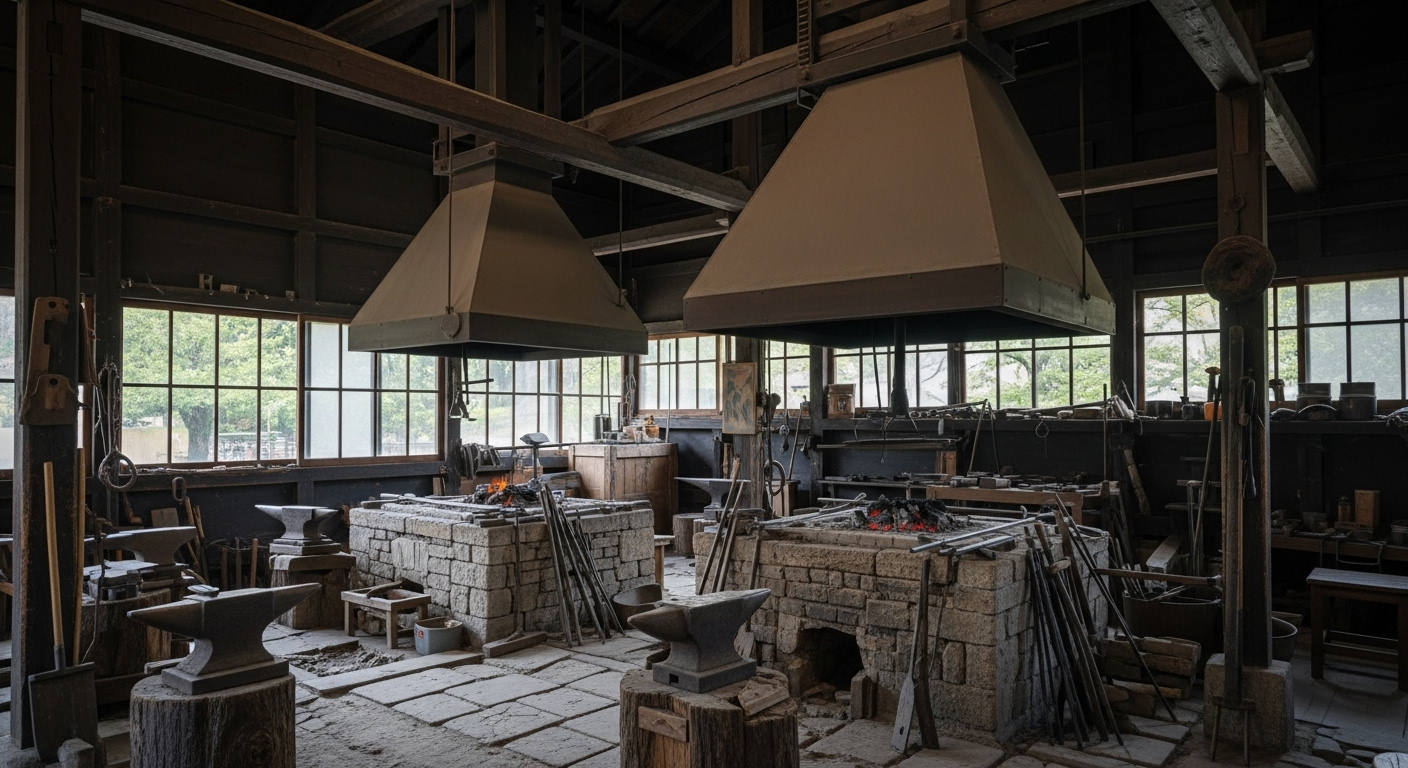
FAQ About White Steel #1
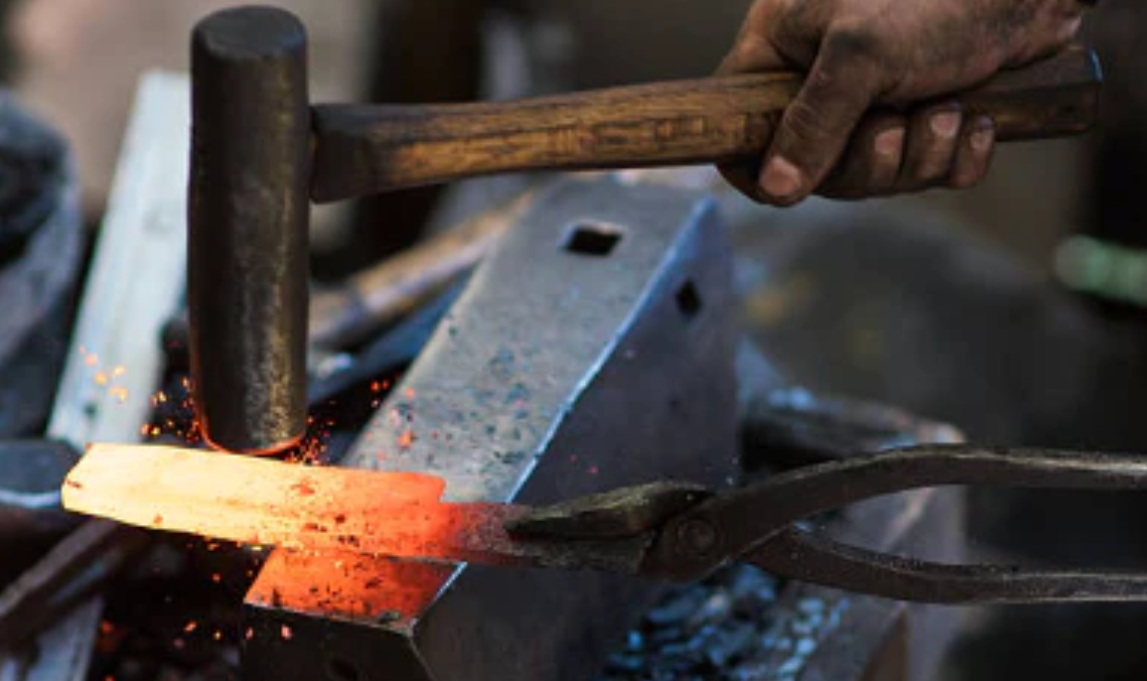
Q1. What is White Steel #1?
White Steel #1 (Shirogami No.1) is a high-carbon, ultra-pure Japanese steel with a slightly higher carbon content than White Steel #2. This results in greater hardness and the potential for a razor-sharp edge of extraordinary refinement. Forged without alloying elements, it offers a traditional, responsive feel—every cut reflecting the technique and precision of the user.
Q2. How does it differ from White Steel #2?
The key difference lies in carbon content. White Steel #1 contains more carbon, giving it higher hardness and longer edge retention than White Steel #2. However, this also makes it more brittle and less forgiving. White Steel #1 is suited for those who prioritize sharpness above all else—and who have the skill to handle it with precision.
Q3. Does it rust easily?
Yes. Like all carbon steels, White Steel #1 lacks chromium and is highly reactive to water, salt, and acidic foods. To prevent rust, rinse and dry the blade immediately after use, avoid leaving it in contact with acidic residues, and apply a thin coat of oil for long-term storage. With proper care, the steel will reward you with unmatched clarity in cutting.
Q4. Is it easy to sharpen?
Yes, but it requires precision. Because it has no alloying elements, White Steel #1 responds beautifully to whetstones and takes on an extremely fine edge. However, its high hardness also makes it less forgiving—too much pressure can cause chips, and overheating during sharpening can reduce hardness. Mastering White Steel #1 means learning control, care, and attention to detail.
Q5. Who is it for?
White Steel #1 is for professionals, skilled sharpeners, and those who see their knife not just as a tool, but as an extension of their craft. It rewards chefs who value absolute sharpness, precision, and the pursuit of mastery. For those who enjoy refining their technique, White Steel #1 offers a level of performance few steels can match.
Q6. How should I maintain it?
Wash and dry the knife immediately after each use, avoid prolonged exposure to acidic or salty foods, and only use it on appropriate cutting surfaces. For long-term storage, apply a thin coat of oil. White Steel #1 does not tolerate shortcuts, but with care, it becomes a lifelong companion—one that grows with you as your skills deepen.

Comprehensive Guide to White Steel and Blue Steel
White Steel #2 vs. Blue Steel #2: Discover the key differences that shape sharpness, durability, and performance in Japanese knives.

Comprehensive Guide to White Steel #1 and White Steel #2
White #1 vs. White #2: Compare edge sharpness, ease of sharpening, and professional vs. daily kitchen performance.

Japanese Knife Materials
The steel behind a Japanese knife defines its sharpness, durability, and care. From traditional carbon steels like White #2 and Blue #2 to modern innovations such as Ginsan and ZDP189, each material offers its own balance of performance and maintenance. This guide explores how these choices shape the knives we use today.
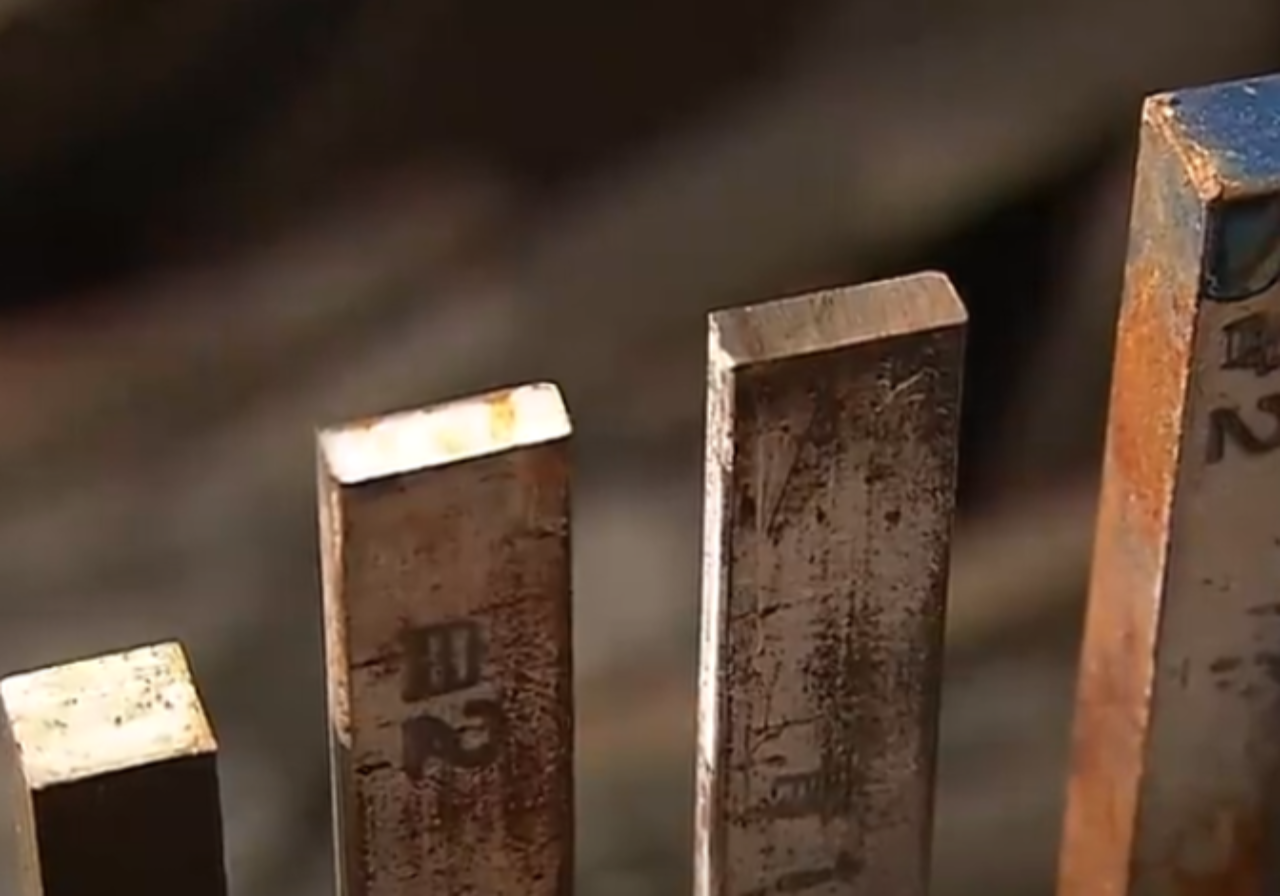
Yasuki Steel: The Heart of Japanese Knives
Yasuki Steel has long been the legendary core of Japanese knife-making. With the 2023 transition from Hitachi Metals to Proterial, its future is at a turning point. The continued yet uncertain production of White and Blue Steel—and the arrival of new stainless options—raises important questions for makers, users, and collectors alike. Understanding Yasuki Steel is more essential than ever to grasp the future of Japanese knives.
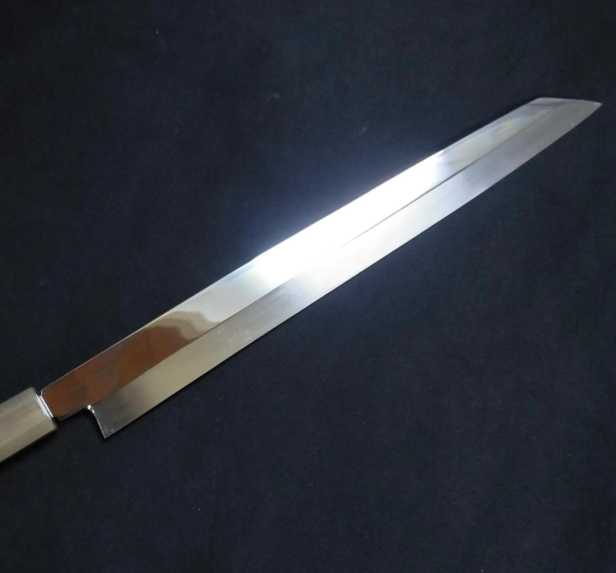
White Steel #1: Seeking Ultimate Sharpness and Ease of Sharpening
White Steel #1 is a traditional Japanese knife steel known for its exceptional sharpness and ease of sharpening. This highly pure carbon steel is prized by chefs and knife enthusiasts worldwide for its unrivaled cutting performance and ability to hold an edge. Learn about the history, characteristics, and benefits of Shirogami: White Steel #1 and why it's considered the soul of Japanese knives.
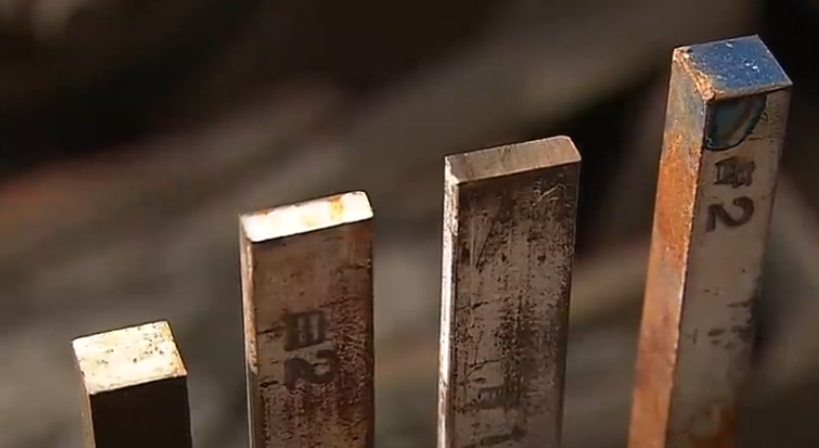
The Soul of Craftsmanship
-
The Pure Brilliance of White Steel #1: Crafting Unmatched Sharpness
White Steel #1 is the canvas where a craftsman’s true skill is revealed. Made only of iron and carbon, this pure steel embodies simplicity and purity—yet demands absolute precision in quenching and forging. There is no margin for error. It is within this challenge that the soul of the craftsman is etched into the blade.
-
The greatest appeal of White Steel #1 lies in its simplicity and in the profound satisfaction of sharpening it. With every stroke of the whetstone, as the edge grows keener beneath your hands, you feel a deep connection to the blade. This process mirrors the art of a chef—refining ingredients with care, transforming them into a perfect dish. Both paths are journeys of refinement, patience, and the pursuit of perfection.
-
When a knife made from White Steel #1 is held, there is a moment beyond words—a silent connection where the devotion of the craftsman meets the passion of the chef. In that union lies the true brilliance of White Steel #1: a shared commitment to excellence that transcends steel and craft alike.
How Japanese Knives Are Made: The Sakai Tradition
Video Provided: Japan Traditional Crafts Aoyama Square (YouTube)
-
Sakai Forged Blades — Six Centuries of Unrivaled Craftsmanship
Loved by chefs around the world and trusted by 98% of Japan’s top culinary professionals, Sakai knives are more than tools—they are the living legacy of over 600 years of master craftsmanship.
-
At KIREAJI, we work directly with the Shiroyama Knife Workshop in Sakai, Japan, ensuring every blade is hand-forged, finished to perfection, and shipped straight from the workshop to kitchens across the globe. No middlemen. No mass production. Only authentic, artisan-made knives, crafted to elevate your cooking for a lifetime.


